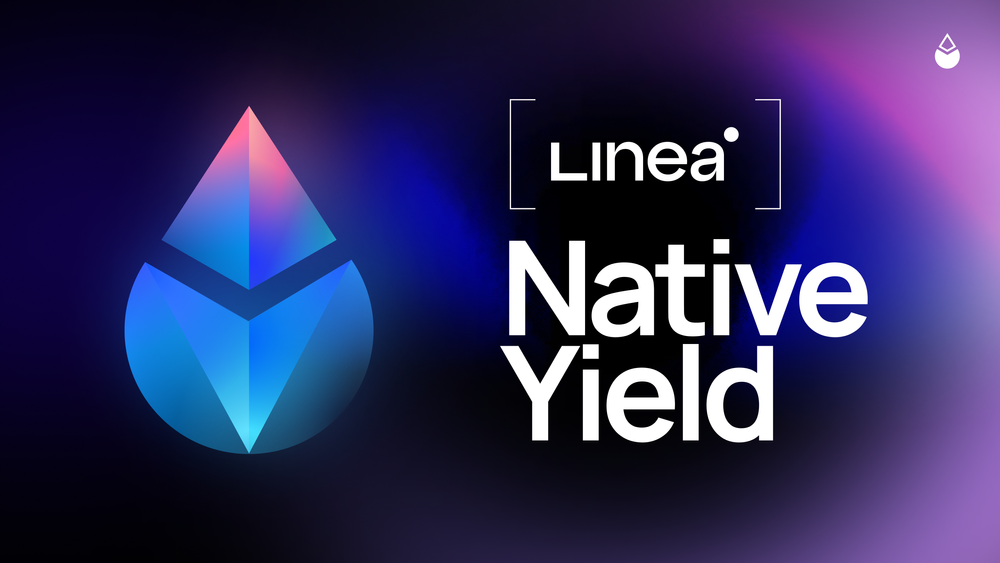Linea and Lido V3: Bringing Native Yield to L2s

Overview
Contributors to the Lido protocol are proud to announce the upcoming integration of Lido v3 and stVaults into Linea’s Native Yield, a new protocol mechanism for automatic, directly integrated Ethereum staking rewards. Linea Native Yield is a novel mechanism that channels Ethereum staking rewards from bridged ETH (L1 → L2) directly into Linea’s liquidity incentive program, which can then be claimed by Linea users.
Linea Native Yield will work by leveraging the upcoming stVault architecture of the Lido protocol as one of the core components of its yield engine, and Native Yield functionality will be available for all Linea stack chains to optionally activate. The Lido V3 whitepaper outlines a range of stVault use cases centered around institutional and DeFi staking vaults, and Linea’s Native Yield infrastructure illustrates the range of new technology enabled by Lido V3’s composable tech stack.
Bridged ETH as Yield-Bearing Infrastructure
From a unique model designed by the Linea team and in collaboration with Lido protocol contributors, bridged ETH on Linea will automatically earn Ethereum-native staking rewards without altering the withdrawal or custody guarantees of the bridge. ETH deposited to Linea will be staked via a Lido v3 stVault, controlled by Linea’s protocol infrastructure, with rewards directed toward liquidity providers and DeFi participants on Linea.
This design ensures bridged ETH on Linea contributes to network staking incentives while preserving full non-custodial and permissionless access to funds.
Withdrawals on Linea are processed through a protocol-level Liquidity Buffer, which holds a reserve of unstaked ETH to enable immediate redemptions under normal conditions. In scenarios where the buffer is temporarily depleted, such as during high-volume exits, users are offered a secondary withdrawal path via stETH, allowing them to exit without delay. This fallback mechanism ensures continuous access to funds while preserving the non-custodial and trust-minimized guarantees of the bridge.
Lido V3 & stVaults: Purpose-Built for Bridging & Infrastructure
Lido V3, scheduled for mainnet release in early Q4/2025, introduces stVaults, a modular primitive for building secure, non-custodial Ethereum staking vaults. stVaults provide infrastructure partners - including rollups, custodians, and enterprise staking providers - with the ability to create purpose-specific staking environments without compromising on operator requirements, permissionless access, or access to liquidity.
In its effort to push forward DeFi innovation and increase onchain capital efficiency, the Linea team explored multiple avenues to deliver native staking functionality, including consideration of both custom staking setups as well as LSTs. When Lido V3 was announced, the Linea team appreciated the key innovations that it would bring, and was eager to work closer with Lido contributors on being one of the first adopters of this technology.
The specially configured Linea stVault deployment will be integrated into their Native Yield infrastructure, serving bridge-native capital flows, and enabling Ethereum-native yield to be earned by ETH bridged to the Linea L2. The stVault integrates directly with Linea’s infrastructure, offering protocol-level control over staking, rebalancing, and liquidity management while maintaining the same non-custodial properties as Lido’s V3 protocol.
The Linea configuration does not mint stETH by default. Instead, it uses a staking-only flow with a rebalancing mechanism that preserves capital availability through an unstaked buffer. The stVault is managed by Linea’s Native Yield Operator, who cannot withdraw funds externally but can perform staking and liquidity operations under protocol-enforced constraints.
This implementation highlights stVaults as general-purpose staking infrastructure, capable of supporting bridge systems, liquidity programs, and ecosystem-aligned yield flows with minimal additional risks.
Ethereum-Centric Staking, Extended to L2
The launch of Linea Native Yield coincides with accelerating momentum around Ethereum. By leveraging Ethereum-native staking rewards to fund liquidity, the design supports sustainable ecosystem incentives aligned with long-term network security, and Linea, as believers in the vision for this new chapter in the Lido protocol, has chosen to adopt the protocol’s technology to help power its Native Yield engine.
Linea Native Yield reinforces Ethereum’s position in DeFi as a secure and yield-generating base asset, and the Lido protocol as the unique staking solution able to meet its complex technical, security, and governance requirements. On Linea, bridged ETH contributes to validator operations and liquidity growth while remaining permissionlessly accessible.
- ETH earns L1-native yield
- Yield funds ecosystem liquidity
- Liquidity drives protocol utility and fee generation
- Protocol-level ETH burn complements deflationary pressure
The result is a virtuous cycle for ETH on Layer 2 - yield generation, protocol revenue, and economic alignment.
If you’re building Ethereum scaling infrastructure, or are using the Linea stack for your chain and considering Native Yield, and you’re curious about bringing stVaults to your protocol, get in touch with the Lido contributor team.